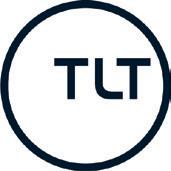and they will reap the benefits of doing so.”


 WRITTEN BY Matheus Carvalho Director of Global Inclusion & Diversity Services, Inclusive Employers
WRITTEN BY Matheus Carvalho Director of Global Inclusion & Diversity Services, Inclusive Employers

and they will reap the benefits of doing so.”


 WRITTEN BY Matheus Carvalho Director of Global Inclusion & Diversity Services, Inclusive Employers
WRITTEN BY Matheus Carvalho Director of Global Inclusion & Diversity Services, Inclusive Employers
While 67% of global leaders report that culture is more important than strategy or operations, how many truly address this crucial dimension when addressing inclusion and diversity needs?
eveloping effective inclusion and diversity (I&D) strategies is no small feat. Challenges abound, from prioritising needs to overcoming resistance to change. Now, imagine multiplying this complexity tenfold in a global context — one where diverse cultural norms, geographical variations and legal frameworks intersect.
Cultural intelligence: a global imperative Thriving in a diverse world demands cultural intelligence. Understanding nuances, appreciating differences and adapting strategies are essential.
This year’s Global Inclusion Week (10–14 June) underscores the importance of cultural intelligence in fostering inclusion across cultures. Multinational organisations often stumble by adopting a one-size-fitsall approach to I&D. This overlooks a fundamental truth: culture matters. Beyond surface-level markers like religion and nationality, culture comprises intricate layers. Picture culture as an iceberg: the visible tip represents only 10% of the whole. Beneath the surface lie intangible elements — values, beliefs and mindsets — that outsiders often struggle to grasp.
universally apply. Yet, this stems from misconceptions that their approaches are inherently superior or more progressive.
Inclusive recruitment is vital to build a truly inclusive workforce where all employees feel valued, included and like they belong. This can have tangible business benefits.
BBeyond surface-level markers like religion and nationality, culture comprises intricate layers.
The term ‘glocal’ resonates globally. It fuses global and local strategies, enabling organisations to adapt while preserving core identity. Yet, it can inadvertently reinforce power imbalances. For instance, a ‘glocal’ campaign promoting foreign products should genuinely collaborate with local talent. Leaders must honour diverse voices and cultural authenticity. Strategically navigating global I&D requires finesse. Start by assessing local experiences — through interviews, surveys or focus groups. Overlooking these can lead to reactions ranging from disinterest to outright resentment.
In today’s socially conscious landscape, leaders grapple with historical power dynamics. To foster equity, practice cultural humility. Leaders should ask themselves: Would decisions change elsewhere? Whose voices have we overlooked? Are our leaders representative of the societies we serve?
usiness in the Community (BITC) strives to create a fairer world, and inclusivity sits at the heart of this. With over 1 million working-age adults in the UK unemployed and looking for work,1 and employers looking to hire for nearly 1 million vacancies, it is crucial that employers use inclusive recruitment practices to fill hard-tofill vacancies and address the UK’s skills gap.2
To help employers address this, BITC’s Opening Doors campaign helps employers prioritise inclusive recruitment to access more diverse talent,3 reaping tangible business benefits.
Accessing more diverse talent Recruitment practices should be accessible at all stages, from outreach to assessment. Partnering with organisations that support disadvantaged groups into work is an excellent first step in accessing a diverse talent pool.
Employers should make job advertisements inclusive and transparent by advertising salary, using inclusive language and removing jargon. Research shows that 7 out of 10 graduates would be discouraged from applying due to jargon in job posts.4
 WRITTEN BY Ola Kolade Employment and Skills Director, Business in the Community
WRITTEN BY Ola Kolade Employment and Skills Director, Business in the Community
will be more likely to attract and retain talent.
Business benefits of inclusive recruitment
By reaching out to disadvantaged groups and making the recruitment process as inclusive as possible, employers can reach more diverse talent. Having a diverse workforce that reflects the customers and communities they serve has proven benefits for employers, such as better decision-making and problemsolving, with diverse teams over 35% more productive.5
If inclusive recruitment is embedded effectively into business strategies, employers could see an increase in employer attractiveness and improved brand reputation.6 Organisations that train hiring managers on inclusivity are 15% more successful in inclusive recruitment and more likely to hire people from disadvantaged groups, such as women, ethnically diverse people and people with disabilities.7 Employers should be open to all jobseekers, and they will reap the benefits of doing so.
References
1.
2.
The hidden depths of culture Blanket approaches prevail in English-speaking Western cultures. Organisations based in the UK and US may assume their methods
Being culturally intelligent is vital for inclusion and diversity success. Understand regional nuance; it’s an investment that pays dividends. Don’t ignore what lies beneath the iceberg; consider it an opportunity to get it right.
Employers must prioritise essential skills over formal experience when assessing a candidate’s suitability for a role. This will ensure that people who are entering the workforce or have been out of work for some time are not overlooked. Additionally, by prioritising accessibility and publicising inclusive policies, such as flexible working policies, employers
3.
Doors to Diverse Talent - Business in the Community (bitc.org.uk)
4. Jobseekers are turned off by jargon in job adverts | Milkround
5. Embracing diversity and inclusion: Unveiling employees’ attitudes in the American workplace (yougov.com)
6. Inclusive Recruitment Training Benefits Everyone | Odgers Berndtson
7. Inclusive Recruitment Training Benefits Everyone | Odgers Berndtson
In summer 2024, a new, independent public corporation will be responsible for planning Britain’s electricity and gas networks and operating the electricity system.
 WRITTEN BY Charlie Hayward Organisational Development Lead, National Grid ESO
WRITTEN BY Charlie Hayward Organisational Development Lead, National Grid ESO
This year marks our landmark transition from National Grid ESO to National Energy System Operator (NESO). Our commitment to fostering an inclusive culture will stand as a cornerstone for our new organisation.
At the heart of this transformation, purposeful leadership guides our endeavours, bolstered by robust employee engagement strategies, inclusive recruitment practices and a steadfast embrace of diversity.
Purposeful leadership in energy
In the foundational stages of NESO’s establishment, purposeful leadership will set the tone for inclusivity from the top down. Leaders within our organisation are responsible for championing diversity, equity and inclusion (DEI) initiatives, embedding

them into strategic decision-making processes and organisational policies.
Zoe Morrissey, National Grid ESO Belonging Executive Sponsor, says: “We, as leaders, are responsible for driving the inclusion agenda at the top level and must lead by example for the rest of the organisation. By articulating a clear vision of inclusivity, we can inspire trust, foster collaboration and empower our employees to contribute their unique perspectives.”
Central to our efforts in cultivating an inclusive culture is robust employee engagement. We recognise that every individual within our organisation will play a vital role in shaping collective success. Through open communication channels, regular feedback mechanisms
and opportunities for professional development, we foster a sense of belonging and ownership among employees.
As we continue the transition process, attracting and recruiting diverse talent is paramount. We are implementing proactive strategies to attract candidates from diverse backgrounds, including targeted recruitment campaigns, partnerships with diverse professional organisations and inclusive hiring practices. By prioritising diversity in our hiring processes, we will enrich our talent pool, bringing together individuals with a wide range of experiences, perspectives and skills.
As we transition to NESO, we will continue to celebrate diversity as a source of strength and resilience. We recognise that embracing diversity goes beyond representation; it requires the creation of an inclusive environment where all voices are heard, valued and respected.
Through structured DEI training programmes, our Belonging Forum and Employee Resource Groups, we foster a culture of belonging where employees feel empowered to bring their authentic selves to work. Embracing diversity in all its forms will allow us to unlock the full potential of our workforce during this period of organisational change.
LGBT+ History Month may have just passed, but we should keep the spirit alive all year round. Whether at home or in the workplace, foster a safe supportive environment for all.
 WRITTEN BY Robbie de Santos Director of External Affairs, Stonewall
WRITTEN BY Robbie de Santos Director of External Affairs, Stonewall
In the workplace, LGBTQ+ people still face significant barriers. Our research shows that 1 in 10 LGBTQ+ people have experienced barriers to progression at work, 1 in 8 still don’t feel able to disclose their identity to their colleagues and 1 in 5 LGBTQ+ job searchers felt discriminated against.
Why workplace inclusion is important
Supporting LGBT+ History Month and Pride fosters positivity, but genuine workplace inclusivity requires leaders to meaningfully address staff needs, creating a safe space where individuals can express themselves, unleash creativity and realise their full potential.
Employer support is vital during key life moments — whether for a lesbian couple needing time off for IVF, a gay man adding his husband to ‘death in service’ benefits or a trans colleague contemplating time off for a medical transition. Below are some tips to show genuine support.
1. Have inclusive policies
your inclusive ethos and practices in your job ads — they may encourage more candidates to apply.
3. Offer training and development
Ensure all employees understand that your company is committed to LGBTQ+ inclusion. Help people understand how they can effectively include their LGBTQ+ coworkers and clients. Provide training and development to ensure consistency across your organisation.
4. Engage senior support
Work with senior leaders to keep the conversation going authentically throughout the year.
Ensure your company has clear rules against discrimination and harassment and that LGBTQ+ people’s lives and relationships are reflected in policies like family leave. Clear guidelines supporting employees who are transitioning can also make a huge difference.
2. Proudly spread the word
Let jobseekers know that your workplace is a safe and welcoming space for LGBTQ+ people. Proudly showcase
Work with senior leaders to keep the conversation going authentically throughout the year. Encourage them to champion inclusion initiatives and provide a platform for LGBTQ+ colleagues to share their stories throughout the year.
5. Build an empowering community Nurture LGBTQ+ employee resource/network groups — spaces where colleagues can connect and support each other. It’s a great way to encourage peer support on diverse challenges and experiences.
Stonewall has aided numerous firms and public organisations to support LGBTQ+ staff, customers, clients and partners. The Stonewall Diversity Champions programme provides sector-specialist support, tailored strategy planning and transformative inclusion practices.
Let’s build on the momentum from LGBTQ+ History Month and continue building inclusive workplaces where everyone can thrive.
 Helen Hodgkinson Chief People Officer, TLT LLP
WRITTEN BY Tony Greenway
Helen Hodgkinson Chief People Officer, TLT LLP
WRITTEN BY Tony Greenway
Women have always had to pivot, turn and shape themselves to fit a malefavoured workplace business model. However, new generations of employees are demanding change.
Companies don’t set out to be discriminatory, insists Helen Hodgkinson, Chief People Officer at law firm, TLT. Most have good intentions and want to do the right thing. Despite this, problems remain.
For instance, women still encounter obstacles like unconscious bias, gender stereotyping, sexism, limited senior roles representation, inadequate flexible working support and awareness gaps on women’s health issues in the workplace.
Proactive flexibility beyond statutory requirement
However, when it comes to better workplace flexibility, there’s an encouraging sign: from April, employees will have the statutory right to request flexible working from day one of employment. That’s great, agrees Hodgkinson — but companies should offer this type of opportunity anyway, without being asked.
“Any forward-thinking business should know that we all manage our lives in different ways,” she says. “For example, as a working mum of three, no two weeks are the same for me. If, post-pandemic, a company has gone back to mandating traditional ways of working, it’ll find it has problems recruiting and retaining talent.” Flexible working contributed to TLT reaching 33% female partner representation, exceeding its 2025 goal by two years.
Better understanding of women’s health issues
Similarly, businesses that aren’t
alive to women’s health issues will need to be. In February, the Equality and Human Rights Commission (EHRC) issued new guidance about menopause in the workplace and an employer’s legal obligations under the Equality Act 2010. “I cannot stress this enough,” says Hodgkinson.
“Women have their own sets of health challenges, which can significantly impact their ability to do their jobs: menopause, endometriosis and reproductive issues are just some examples. Providing additional support to women facing these issues can go a long way to keep them in the workplace.”
To effect real change for female employees, Hodgkinson emphasises securing senior leaders’ support. They must actively engage with staff, seeking input on the support they need and initiatives they want to see implemented.
Setting ambitious targets for gender diversity will mean a business is holding itself accountable to do things better — much like TLT’s new target of achieving 50% female partners by 2029.
For a long time, women have had to pivot, turn and shape themselves to fit the current — and male-favoured — business model. “That is no longer sustainable,” insists Hodgkinson. “For new and emerging generations, it is time for that model to change. Don’t fix the women — fix the system.”


Over the past few years, the working world has become alive to the incredible talents that neurodiverse people offer.
There still seems to be the misapprehension that neurodiverse people are only capable of technical jobs, such as finance or software development, rather than leadership or people management.
However, as a CEO with ADHD, I’m here to tell you that neurodiverse people do make open and authentic leaders and honest and considerate managers. The talents, skills, experiences and expertise that neurodiverse people bring to leadership are broad and deep. It’s time for organisations to start harnessing this untapped leadership pool.
Skills mastery for neurodiverse employees
As individual contributors, neurodiverse employees are able to master a skill or talent quickly. Leaders should be able to understand the disciplines of those in their team that may be different to your own, which provides a unique opportunity to support them in their roles better.
Problem-solving ability
Neurodiverse people have extraordinary pattern recognition abilities and see connections between things that others often don’t, making them fantastic problem-solvers.
Outside-the-box thinking
Neurodiverse people have the ability to think critically and abstractly. They can challenge norms and add enormous value to strategy development with their ways of thinking.
Resilience of neurodiverse people
As most neurodiverse people have had to navigate the neurotypical world and find alternative ways to get where they need to go, they have developed the superpower of resilience along the way.
Absolute honesty
Neurodiverse people often exhibit complete and unfiltered honesty. In leadership, this cuts through the noise and politics and coalesces others around getting things done in a no-nonsense and impactful way. So, how can organisations support neurodiverse people and encourage them into leadership roles?
Reach out for help
Most organisations will not have the expertise in-house to do this, so it’s vital to partner with diversity, equality and inclusion (DEI) or neurodiversity organisations.
Removing barriers
It’s critical for organisations to make sure there are no barriers for neurodiverse people at any point in the employee life cycle — from recruitment and onboarding to retention and progression. More importantly, they must ensure that learning, development and progression opportunities are fair, equitable and appropriately accessible.
Create specific pathways into leadership
To make it sustainable, employers should collaborate with neurodiverse employees to develop leadership pathways and programmes that meet their specific needs.
A competitive edge
Diverse thinking, approaches and ways of working lead to greater creativity, innovation and business growth opportunities. As such, organisations that support neurodiverse people in leadership roles will have a competitive edge.

~Sandi Wassmer, CEO, Employers Network for Equality and Inclusion
Why you should help employees access cancer services
Employers must consider a cancer strategy that focuses on cancer prevention and early cancer detection for all employees, not just those with private medical insurance.
Until recently, many employers relied on the NHS to look after their employees without private medical insurance (PMI) coverage if cancer was suspected or diagnosed. However, pandemic impacts have increased waiting times for cancer diagnosis and treatment to a level that is unacceptable for employees and employers, with a shift to later-state diagnosis estimated to be as high as 17%.
Cancer risk assessment and prevention
Check4Cancer offers cancer risk assessment using MyCancerRisk©, an online platform that identifies those at higher risk of six common cancers (bowel, breast, cervical, lung, prostate, skin) so that these employees can access funded cancer screening and/or risk reduction strategies.
This enables employers to ensure that their spend is targeted to the higher risk employees while providing access to an education hub that raises awareness of the risks, signs and symptoms of common cancers. The Cancer Impact Calculator© can provide a return on investment for employers who adopt this service.
Cancer screening for employees
Cancer screening helps to detect cancer at an earlier stage so that employees require less intensive treatment, return to work quicker and live longer. For employers, there is also a positive impact on absenteeism and presenteeism rates.
Cancer screening is also available to employees from Check4Cancer either as a flexible benefit or as a company-funded programme. We have seen significant increases in corporate cancer screening since the end of lockdowns as companies step in to look after their workforce.
Access to streamlined diagnosis
Check4Cancer currently provides rapid access without GP referral to streamlined diagnostic pathways for breast, prostate and skin cancer. Investigations are undertaken promptly to ensure either reassurance can be given that a cancer is not present, or a diagnosis is provided quickly to enable treatment to commence. With current delays to cancer diagnosis and treatment, access to these services could be extended to employees without PMI coverage via a Trust or additional funding.
 WRITTEN BY Professor Gordon Wishart Chief Medical Officer, Check4Cancer
WRITTEN BY Professor Gordon Wishart Chief Medical Officer, Check4Cancer

Proactive HR strategies are crucial to tackle challenges posed by an ageing workforce. Insights reveal essential actions for workplace inclusion.
The Reward and Employee Benefits Association (REBA) has found that most larger employers are aware they need to put in place human resources strategies to mitigate any risks associated with the rising average age of their workforces.
Ageing population impact on workplace
To date, few have taken action, according to the Association’s ‘Longer working lives: the future of people strategies’ research published in partnership with Mercer Marsh Benefits in February 2024.
Such action should not be delayed. The UK Census 2021 results show that the number of people in England and Wales aged 65 and over increased from 9.2 million in 2011 to over 11 million in 2021, and the proportion of people aged 65 and over rose from 16.4% to 18.6%.
Challenges and opportunities in workplace inclusion
In 2023, REBA produced its first ‘Disability in the workplace’ report in association with Bupa. The findings showed that while many disabled employees, and those living with long-term chronic illness, may have positive experiences at work, the majority feel that their career prospects are hampered by their disability, illness or condition.
Not preparing for age demographic change will unsettle business continuity in the long run.
This ongoing demographic shift is playing through into workplaces. This means that, as employees work to older ages, there will be growing cohorts dealing with long-term chronic conditions such as cancer, various disabilities or caring responsibilities.
Inadequate inclusion for ageing workforces
Across several data insight reports, REBA observes very few employers incorporating inclusive measures for older employees within their wellbeing programmes. This is despite awareness that it will help them keep more productive talent as people work into their 60s and 70s and employers struggle to fill roles.
A significant minority believe that employers could do more to support them. Yet, employers often struggle to develop a culture, benefits strategy and policies that support employees’ success at work and in their wider lives.
Not preparing for age demographic change will unsettle business continuity in the long run. Declining health, rising caring responsibilities and increasing insurance claims and absences mean that jobs may need to be redesigned, with working days or weeks reconsidered to become more flexible. Work might start to look quite different in the years to come, ultimately to the benefit of all ages.
 WRITTEN BY Debi O’Donovan Director, Reward & Employee Benefits Association
WRITTEN BY Debi O’Donovan Director, Reward & Employee Benefits Association
More workers fear their financial concerns are affecting workplace performance. Employers are urged to offer more pension planning guidance.

With research suggesting that almost three-quarters (72%) of employees are more anxious about finances due to the cost of living, workplace pensions expert Emma Douglas encourages employers to be more proactive with supporting personnel as they get closer to retirement.
Financial wellbeing at work
Raising awareness of pension and retirement options through seminars, mid-life MOTs and finance support tools can be invaluable in helping people plan their financial future.
Douglas, Director of Workplace Savings and Retirement at Aviva, points to numerous reasons why employers should support financial wellbeing in an older workforce. “Probably the starkest,” she explains, “is recent research finding that 87% of those with financial worries said it affects their work.”
Financial planning support for businesses
This becomes increasingly acute with the over-50s as they see retirement on the horizon.
“People have financial wellbeing worries from time to time. That can often be about how they feel about money rather than the numbers in their bank account or the amount in a pension fund,” adds Douglas.
“Employers should offer information and support services that their employees can access.” This benefits employees and employers as it enables workers to ‘retire with dignity’ at a time that suits both parties but also enables firms to conduct effective workforce planning.
Douglas underlines the need for employers to tailor, target and personalise supportive information to employees’ specific concerns, whether regarding debt, having enough money for retirement or day-to-day budgeting.
Workplace pension scheme and finance tools
Paid for by Aviva
Consolidating lost pensions and retirement planning
Aviva is also developing a free online pension tracing and consolidation service to track down lost pensions. “The tracing service aims to bring those together and offer a more holistic view of their retirement income,” explains Douglas. Further tools provide a decision-making framework on how to spend that money at retirement. Companies increasingly value the experience and skills of the over-50s workforce. The ‘Working Lives Report 2023: Fit for Future’ found that 1 in 10 had introduced support for retaining over-50s, such as mid-life MOTs, job sharing, part-time working opportunities and re-skilling.
Employers should offer information and support services that their employees can access.
As a leading insurance, wealth and retirement company, Aviva provides workplace pension schemes for employers of all sizes. It offers a range of practical tools for employers to help employees — from budgeting calculators, retirement forecasters and seminars covering money basics to sophisticated financial planning.
That includes developing a financial wellbeing tool, which uses technology to deliver personalised support to workplace pensions scheme members, offering an action plan, education documents and coaching services. “One of the things we have also piloted that we have found really useful is a mid-life MOT,” she explains. “This can cover financial and physical health or career plans.”
Their research also found almost four in five (79%) employees would like more support from their employer in planning for a financially comfortable retirement. Of those, over two in five (41%) would like more information on how to build up a pension pot, and 45% would like more information on how to make a pension last throughout retirement.
Pension gaps among groups
A core focus is to help workers close ‘pension gaps’ — aligning finances with their retirement lifestyle goals. Pension gaps may arise from career breaks for caregiving, travelling or periods of self-employment without a personal pension.
However, Douglas warns that some groups are more vulnerable to pension gaps, particularly women who are more likely to work part-time. A concerning statistic reveals that upon retirement, women aged 60–65 typically have a pension pot that is only about 57% of what men have accumulated.
“It is a big issue, and we really want people to think about this. Pension contributions are unlikely to be a deciding factor when considering whether to work part-time, but it’s important the long-term impact on a pension is understood. This is key to good financial planning,” she concludes.
Employees want to work in diverse and inclusive environments where wellbeing is a priority. As such, they are demanding benefits packages that are relevant to their needs.
 INTERVIEW WITH Matt Russell CEO, Zest Technology
WRITTEN BY Tony Greenway
INTERVIEW WITH Matt Russell CEO, Zest Technology
WRITTEN BY Tony Greenway
The power balance between employers and employees is increasingly changing. For example, in job interviews, candidates are often asked: ‘What can you offer our organisation?’ Now, candidates are asking interviewers: ‘What can your organisation offer me?’
Employee benefits vital for retention What potential employees want is a workplace where diversity, inclusivity and employee wellbeing are a priority, says Matt Russell, CEO of employee benefits technology company, Zest. If those aren’t on offer, they’ll go elsewhere.
Today’s employees are more switched-on about wellbeing and are
not keen to work in environments where their voices are ignored. Savvy companies realise this and know that it’s imperative to create healthy, interesting workplaces where employees feel included and can be themselves. This involves looking after their physical, mental and financial wellbeing with the right employee benefits packages.
Employees now expect these packages to be offered as standard; Zest points to research ahead of last year’s World Mental Health Day, where 83% of businesses said their employees are demanding more wellbeing benefits. “If a business has a good wellbeing strategy, its workforce will be healthier and more productive,” says Russell.
Employees want relevant, personalisable benefits
However, benefits packages are changing, too. Not long ago, companies would offer employees a general benefits package — but ‘general’ doesn’t cut it. “Employees were saying: ‘The benefits I’m being offered by my company are not relevant to me’,” reveals Russell.
“These days, they want benefits that are customised to them.” Apart from anything else, it’s an effective way to drive workplace inclusivity.
Companies need a platform that holds a vast range of benefits in one place. Employees can then access and cherry-pick the ones suited to their needs. “It gives employees the flexibility and choice they are looking for and enables them to personalise their employee experience,” adds Russell.
If you’re a business that is starting in this space from scratch and want to know which employee benefits to include, Russell advises: talk to your employees first. “Find out what their needs are and what they want to achieve,” he says. “Then work with a supplier that has a marketplace of pre-procured, pre-approved benefits in a wide variety of areas that you can pre-select. Above all, remember that personalisation is key.”
One in four people in the UK have a disability. However, too often, disabled people are either missing from the images we see in media or misrepresented.
 WRITTEN BY Lara Davis Head of Communications, Business Disability Forum
WRITTEN BY Lara Davis Head of Communications, Business Disability Forum
To attract and retain diverse and disabled talent, employers need to make sure they represent disabled people and disability authentically within their employer brand — not just in recruitment information, but across the whole business; and not just in communications related to disability.
Disability at work is missing or misrepresented
Employers that communicate disability well include a diverse range of people with varying disabilities — including those that are less visible (around 80% of all disabilities) — in the images they choose or commission, and they avoid stereotypes.
Less than 1 in 10 disabled people in the UK use a wheelchair, for example. However, in recent research by Ipsos for Business Disability Forum, 26% of adults surveyed said that they were most likely to have seen images of wheelchairs and mobility scooters in content to represent disability.
disability’ campaign is calling on businesses and the media to increase and improve the representation of disabled people and disability in images.
The campaign provides free guidance on how to select, commission and use images in a disability-smart way, including the use of captions and alternative text to increase understanding of disability. Business Disability Forum has also created a collection of disability-smart images, which include disabled people in real-life workplace scenarios.
A third said they had not seen any disability represented in content they had seen or read in the last six months.
A third said they had not seen any disability represented in content they had seen or read in the last six months. If people don’t see themselves, they won’t think your workplace, products or services are for them.
Representation support for business Business Disability Forum’s ‘Changing the image of
Representing disability realistically is part of building an inclusive culture where disabled people feel welcomed, included and understood — and where they want to work. Have you been using the same set of images for some time? Why not get disabled colleagues involved in reviewing them? Images that include disabled people or disability don’t only belong beside copy about disability or inclusion.
Changing the image of disability isn’t just about doing the right thing; it’s about employers communicating better with all their employees and potential employees. Failure to provide recognition may result in employees and candidates seeking opportunities elsewhere where such recognition is present.
